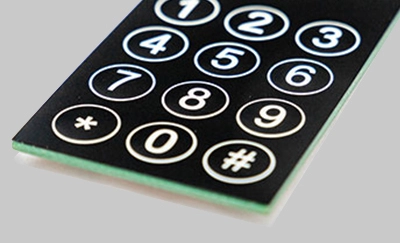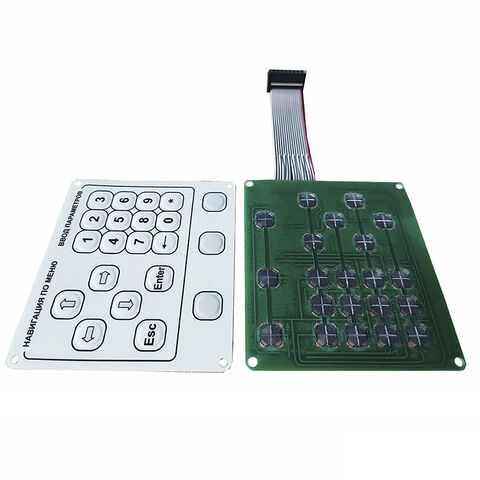The Advantages of Utilizing Membrane Switches in Customer Electronics
Membrane layer switches are increasingly recognized for their considerable benefits in consumer electronics, particularly in boosting user communication and enhancing production processes. The adaptability in layout permits for tailored solutions that fulfill varied customer demands.
Improved Customer Experience
In today's competitive landscape of customer electronics, improved customer experience is extremely important; nearly 85% of users focus on intuitive interfaces. Membrane layer switches over play a vital duty in attaining this level of usability.
The responsive comments provided by membrane layer switches is essential for leading customer actions, ensuring that commands are signed up properly. This feedback device increases and lessens errors individual complete satisfaction, promoting a positive relationship between the tool and the user. Furthermore, the adjustable nature of membrane switches allows producers to tailor user interfaces to particular individual requirements, making devices extra easily accessible and inviting.
Additionally, membrane switches can incorporate backlighting and visuals overlays, better boosting presence and use in varied settings. This versatility guarantees that devices remain straightforward and useful, no matter of the setting. Generally, the assimilation of membrane switches over into consumer electronics significantly boosts user experience, driving brand commitment and fulfillment in a significantly affordable market.
Economical Manufacturing
Consumer electronic devices producers are continuously seeking ways to stabilize high quality with affordability, and membrane switches use an engaging service for economical manufacturing. membrane switch. These components are naturally simpler than typical mechanical buttons, which lowers both production costs and complexity. The lightweight style of membrane switches enables for lower shipping expenses and easier combination into compact tools, even more boosting their appeal in a competitive market

Suppliers can generate membrane layer switches in high volumes, capitalizing on economies of scale. This mass manufacturing capability guarantees consistent top quality while considerably lowering per-unit prices. Additionally, the materials made use of in membrane buttons, such as polyester and polycarbonate, are typically less pricey than those required for standard switch modern technologies, contributing to total cost savings.
The production process for membrane switches over generally requires fewer steps and much less labor compared to various other button kinds. This streamlined method not only minimizes labor expenses however additionally speeds up time-to-market, enabling business to respond swiftly to customer need. The mix of reduced material expenditures and reliable production processes positions membrane layer switches as a clever investment for makers aiming to provide top quality customer electronics at affordable price points.
Layout Flexibility and Modification
While traditional mechanical switches typically enforce limitations on style as a result of their mass and required mounting systems, membrane buttons give unparalleled adaptability and personalization alternatives for customer electronics. This cutting-edge innovation allows designers to create streamlined, low-profile interfaces that can perfectly integrate right into numerous item aesthetic appeals, from smart devices to kitchen home appliances.
Membrane layer buttons can be created in practically any shape or size, allowing makers to customize the design to details ergonomic and useful demands. This adaptability not just boosts individual experience yet likewise permits creative layouts that line up with brand identity. The use of published graphics on membrane switches offers the opportunity for lively colors and intricate styles, which can be easily changed without considerable expense ramifications.
In addition, membrane switches can integrate numerous capabilities right into a solitary layer, decreasing the need for numerous parts and simplifying assembly procedures. This streamlined design approach reduces space and weight, making it ideal for portable customer electronic devices. Generally, the layout adaptability and personalization capacities of membrane changes encourage manufacturers to innovate, ultimately resulting click in more straightforward and interesting items.
Resilience and Dependability
As modern technology continues to advance, the longevity and reliability of membrane switches have actually become important factors to consider for producers in the consumer electronic devices industry. Membrane layer buttons are designed to stand up to extreme environmental problems, including temperature level fluctuations, dampness, and dust exposure. Their robust building and construction frequently entails multi-layered materials that supply a reliable barrier versus pollutants, making certain long life and consistent efficiency.
In enhancement to ecological resistance, membrane layer changes deal remarkable mechanical dependability. Unlike conventional mechanical switches, which may wear gradually, membrane layer switches use a sealed layout that reduces the risk of mechanical failure. The absence of relocating parts not only improves their lifespan yet likewise lowers deterioration, making them ideal for high-usage applications.
Moreover, membrane buttons can endure a substantial number of actuations without loss of functionality, usually exceeding millions of cycles (membrane switch). This resilience equates to decrease replacement expenses and minimized downtime for consumers and suppliers alike. Overall, the combination of environmental strength and mechanical integrity makes membrane layer switches a tactical choice for consumer electronic devices, making sure that devices stay effective and functional throughout their designated life expectancy

Streamlined Product Development
The durability and reliability of membrane switches considerably contribute to structured item advancement in the customer electronics market. By incorporating these switches early in the design procedure, producers can decrease the intricacy and number of components required in their items. Membrane layer switches are compact and light-weight, enabling for a lot more efficient area usage within gadgets, which can result in streamlined setting up processes.

The convenience of manufacturing membrane switches likewise plays a vital role in product development. With modern printing techniques and products, production can be scaled efficiently, decreasing and reducing lead times waste. This causes lower manufacturing prices, improving overall profitability.

Verdict
Finally, membrane switches over substantially enhance consumer electronic devices by offering a boosted individual experience, economical production processes, and functional design choices. Their sturdiness and integrity make sure consistent performance in different settings, while structured product growth facilitates quicker time-to-market. These advantages collectively add to the technology and performance of consumer gadgets, addressing the developing demands of individuals effectively. The integration of membrane switches over visit this site represents a tactical choice for manufacturers seeking to maximize product layout and efficiency.
Membrane layer buttons are progressively identified for their significant benefits in consumer electronic his comment is here devices, particularly in enhancing customer communication and simplifying production processes. Additionally, the materials utilized in membrane layer switches, such as polyester and polycarbonate, are commonly less expensive than those needed for standard button technologies, contributing to general cost savings.
The manufacturing procedure for membrane layer switches generally needs fewer steps and less labor contrasted to various other switch kinds. Unlike traditional mechanical switches, which may wear out over time, membrane layer changes use a sealed layout that minimizes the risk of mechanical failure.In verdict, membrane switches considerably enhance customer electronic devices by offering an improved individual experience, cost-efficient manufacturing procedures, and functional design options.